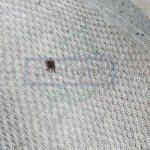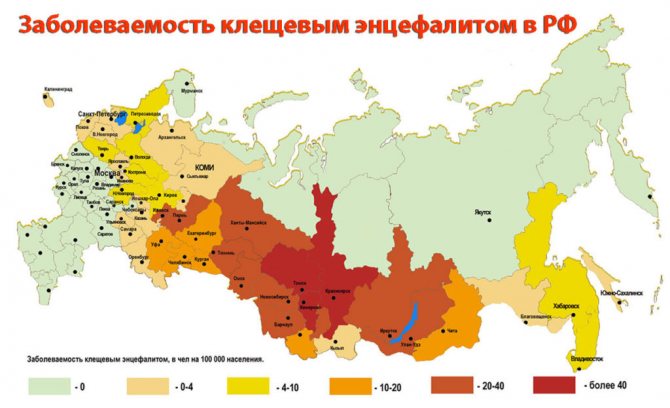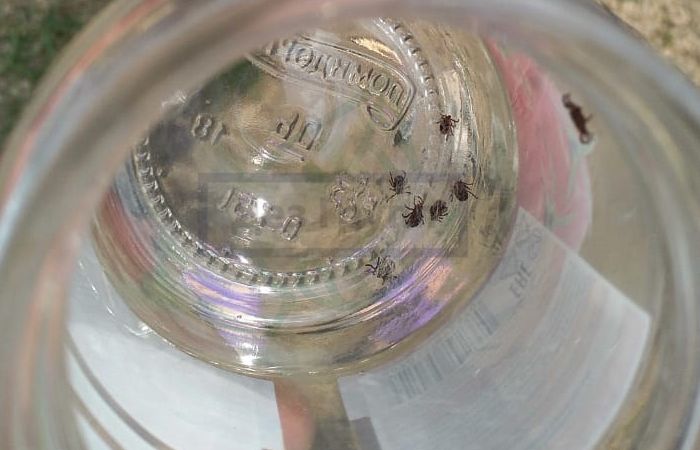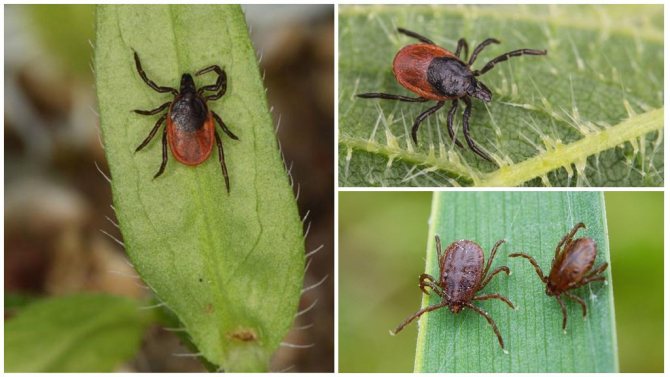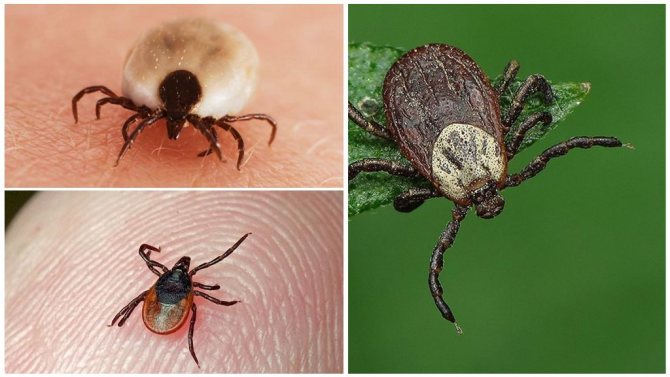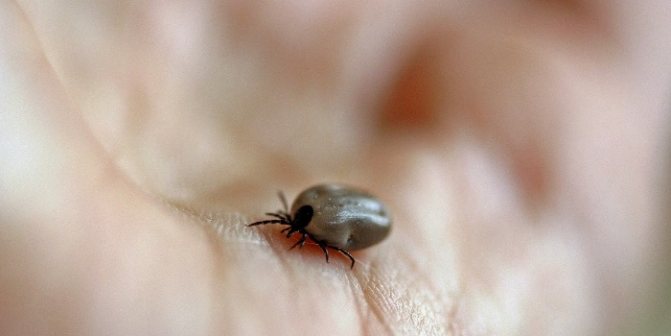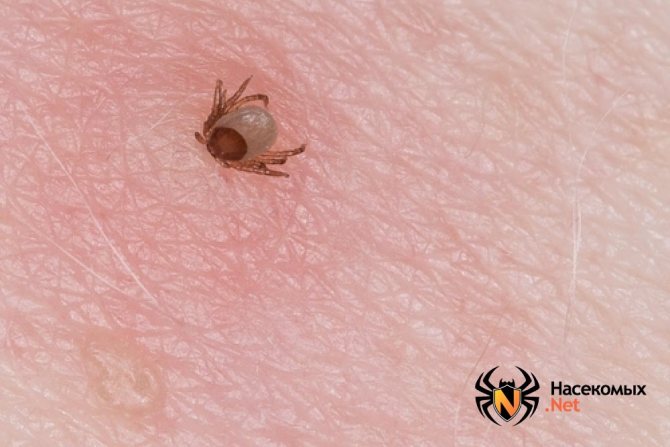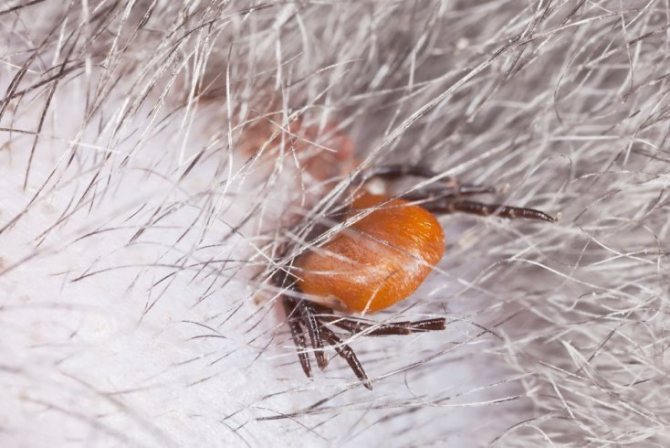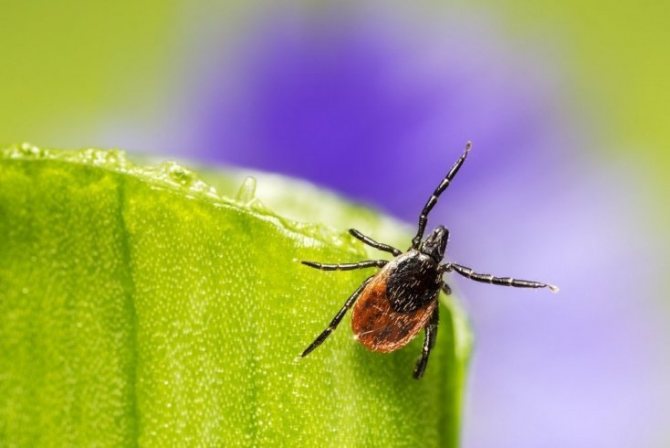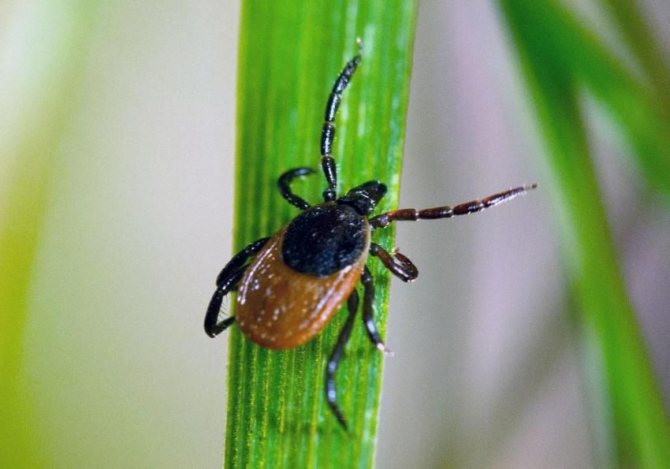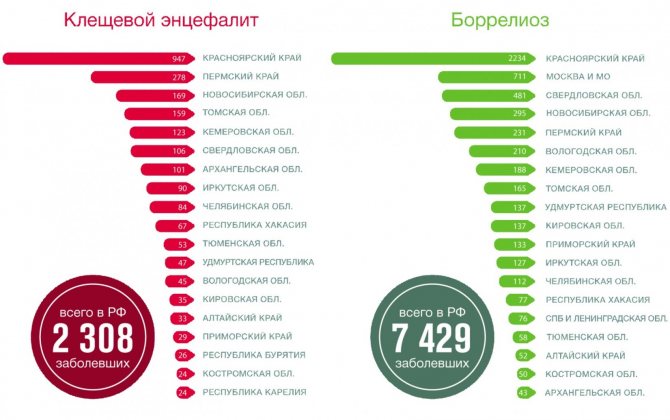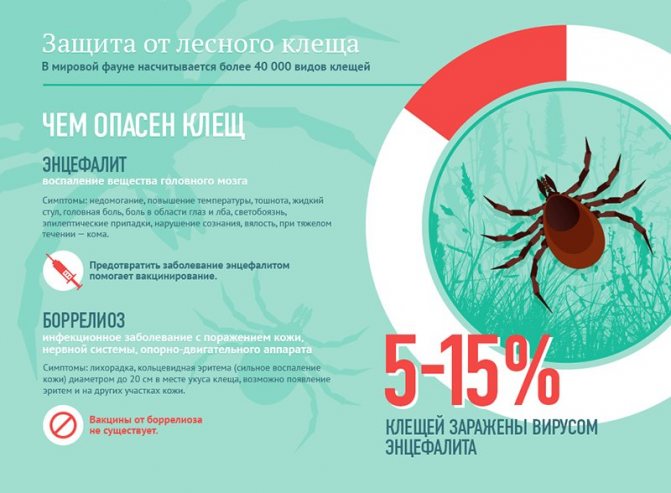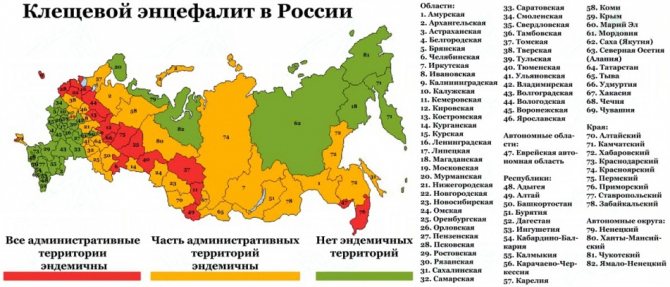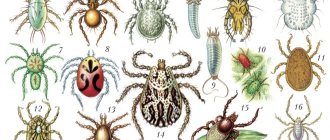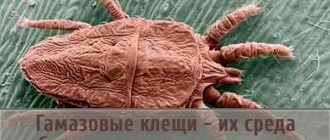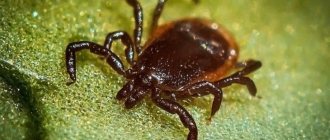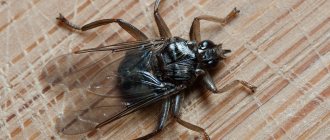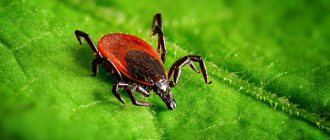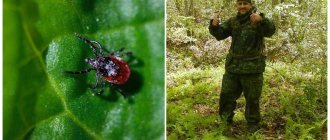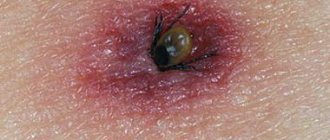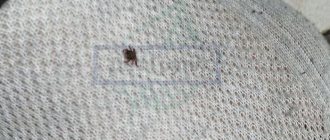Not all ticks carry a terrible disease - encephalitis. Dangerous are those individuals in whose blood there is a virus. Infection occurs during feeding, when a tick bites a sick animal. Every year the Ministry of Health of Russia updates information on where encephalitis ticks live. Residents of dangerous regions, guests should worry in advance about the prevention of encephalitis - get vaccinated.
Tick season 2020
If the tick does not die for reasons beyond its control, then it can live up to 8 years. This means that in the conditions of the climate of the Central region of Russia, it must winter somewhere. In autumn, mites burrow into the upper layer of humus, withered grass, crawl under the bark of trees, where they fall into suspended animation. In spring, weather conditions serve as a signal to get out of hibernation. It depends on them when the tick season begins in 2020. To awaken ticks, it is necessary that:
- The snow has melted.
- A stable temperature is established above + 10 ° C.
Tick awakening is gradual and geographically uneven. On thawed patches heated by the sun, ticks can wake up much earlier than the official start of the tick season for a particular area. This explains the early appearance of the first reports of parasite bites.
How do you know if ticks are awake?
To find out if the ticks in your area are awake, take a white piece of cloth the size of a hand towel and run it along the ground or first greenery where the insects are suspected to be. If the ticks wake up, several individuals are likely to end up on the matter. In the original version of this method, it is recommended to use a waffle towel worn on the shaft like a flag, but you can limit yourself to any fleecy cloth that the insect can catch on to.
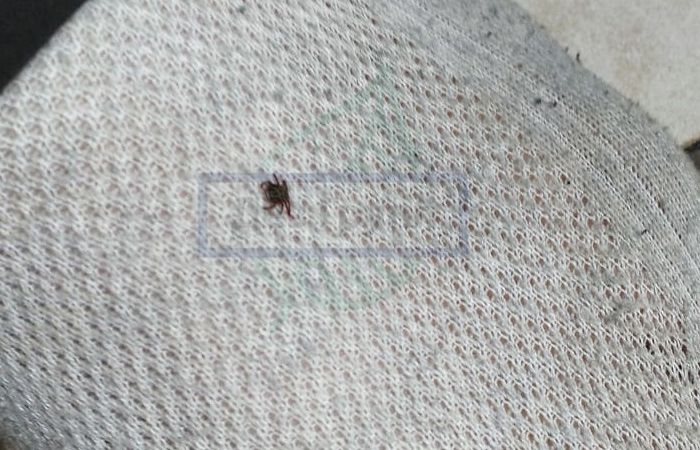
If you do not want to experiment on your own or are interested in a purely theoretical question, the easiest way to find out about the awakening of ticks is to look through the local media or your regional Rospotrebnadzor website for the first reports of bites.
Helpful advice
The most unwanted way to know if ticks are awake is to be bitten. If this is the first time this season you go to the country and plan to work in the garden, even if there is still snow in some places, be sure to apply a tick repellent to your clothes.
The first days and weeks after the snow melts before the start of intensive plant growth is the best time to bait ticks on the site. The treatment carried out at this time suppresses the surge in the activity of parasites at the initial stage, preventing them from even finally waking up. In order to make it or order it at the SES, it is not necessary to check whether the ticks are active. Enough for all the snow to melt.
Recommended links
Professional elimination of ticks in summer cottages and territories for any purpose.
Tick-borne encephalitis endemic areas 2020
Tick-borne encephalitis is a viral infection that attacks the nervous system of the body, affecting the brain and spinal cord. The damage that a virus can cause depends on the extent of the damage to the nervous system. In 25-30% of cases, encephalitis leads to the death of the infected. The disease is extremely dangerous not only for people, but also for dogs
.
A list of areas of the country where encephalitis ticks are found is compiled annually, based on data from the previous season. At the same time, the geography of the spread of parasites infected with the virus practically does not change from year to year, which is why the endemic areas for tick-borne encephalitis in 2020 will remain approximately the same as in past seasons.
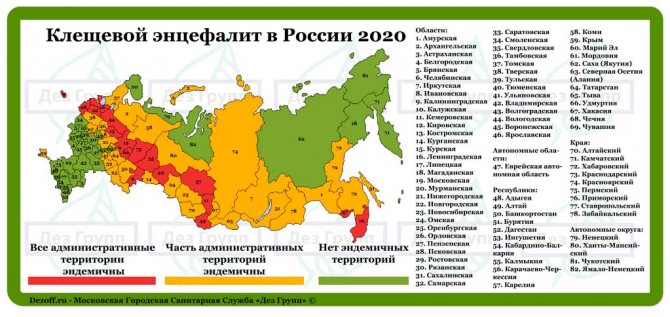

Detailed list of endemic territories of Russia for tick-borne encephalitis
posted on the Rospotrebnadzor website.
Caution!
Even if the territory is not endemic for encephalitis, ticks living on it can be carriers of any other infections. For example, borreliosis and hemorrhagic fever are transmitted to humans 3.5-4 times more often than encephalitis - about 6-7 thousand cases of infection with these diseases are recorded annually against 1.5-2 thousand encephalitis.
Conspiracy theories: are pincers a weapon?
So where did encephalitis come from even before repeated field trials? The above-mentioned theory that the ticks infected with the virus were spread throughout the Far East as a bacteriological weapon by the Japanese was put forward mainly by the KGB officers of that time. It was they who were sure that the only fault was the Japanese hostile to Russia, who for some reason did not suffer from encephalitis themselves (or already knew how to treat it).
However, this version is a little "lame": already at that time the Japanese island of Hokkaido was the most eastern focus of encephalitis infection, although there was no mortality there at that time (the first case of death from encephalitis in Japan was recorded in 1995). Apparently, the Japanese really knew how to cure this disease, but since they themselves got sick with it, the version about a special "throwing" of the infection as a weapon looks untenable.
Already in the XXI century (2012), scientists again seriously thought about the origin of encephalitis and its spread. Some believed that the original focus was the Far East, and from there the disease gradually spread towards Eurasia.
Others believed that the spread, on the contrary, went from West to East.
Still others adhered to a neutral version: the homeland of encephalitis ticks is Siberia, and the distribution moved in both directions from it.
The dominant theory is the idea that the main focus of the disease was in the Far East and from there spread to other regions.
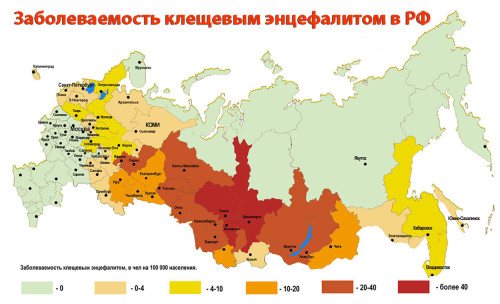

Ticks in Moscow 2020
In Moscow, the season of high activity of ticks usually begins in May, subsides due to the heat in June-August, and then gains momentum again in September-early October and lasts until the temperature begins to drop and ticks again fall into winter hibernation ... The exact dates depend on the season and weather trends of the current year. The closer the temperature is to + 20 ° C, and the humidity is to 80%, the more active the parasites will be. That is, you can guess how active the pests are near you by simply looking at the thermometer or the weather forecast in your smartphone.
Tens of thousands of hectares of public areas and natural recreation areas where ticks can live are processed annually in Moscow. First of all, we are talking about parks, squares, gardens, reserves, cemeteries. Treatments are carried out twice a season - in early spring and late autumn. Every year, more and more territories of the capital are included in the list of objects subject to deacarization. Among them:
- Zaryadye park
- Moscow Zoo
- Kolomenskoye
- Muzeon
- Victory Park
- Patriarch's Ponds
- Tsaritsyno
- Sparrow Hills
- Botanical Garden
- Boring Garden
In addition, treatments are carried out in popular recreation areas near Moscow - Losiny Ostrov Park, Serebryany Bor, White Lake and many other facilities.
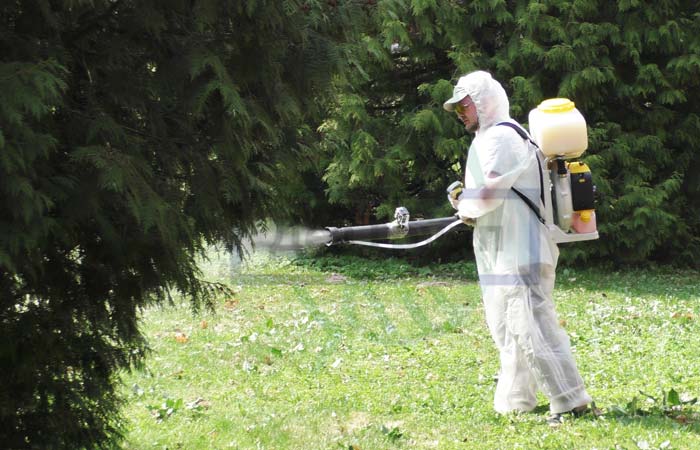

Because of these measures, cases of tick sucking in the treated areas and within the city are rare.Most of the bites with which Muscovites apply to the capital's medical institutions occur while on holiday in the Moscow region or other nearby regions. From an epidemiological point of view, the territory of Moscow is absolutely safe - there have been no cases of transmission of any tick-borne infections over the past few years. Thus, ticks in Moscow in 2020 will not pose a particular danger, however, do not forget about those very isolated cases. When going for a walk in a park or square, observe the basic rules of anti-mite safety. These are listed below in the “How to protect yourself from ticks” section.
Hare-tick-man
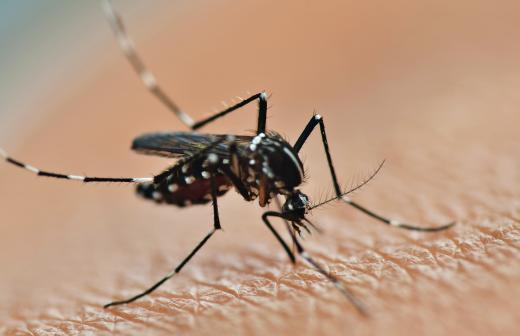

Night mosquito: Russians are afraid of contracting HIV from bloodsucking
A survey by Rosstat showed that citizens are not very familiar with the methods of transmission of this infection
Rospotrebnadzor clarifies that there are a total of 48 territories endemic to viral encephalitis in Russia. According to the list compiled by the federal service at the end of January 2020, 19 regions were recognized as completely endemic (among them the most popular among tourists are the Vologda, Kaliningrad, Leningrad, Novgorod regions, Sevastopol, the Altai Republic and the Altai Territory). In another 29 regions, the virus is spread over part of the territory.
Doctor of Biological Sciences, Professor, Head of the Laboratory of Biology of Arboviruses at the Institute of Poliomyelitis and Viral Encephalitis. M.P. Chumakova Galina Karganova explained to Izvestia that regions in which the virus circulates are considered endemic: that is, ticks infect animals, and they transmit the pathogen to other ticks. And in this territory, cases of the disease have been recorded for several years in a row. The boundaries of endemic regions are being pushed apart by the migration of animals.
Mites
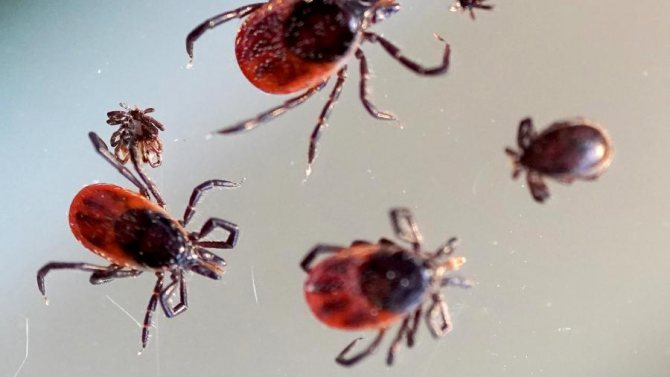

Photo: RIA Novosti / Igor Zarembo
There are pseudo-foci where the virus is regularly brought. So, Muscovites get infected in other places, but get sick at home. Therefore, it is necessary to carry out diagnostics and prevention in the capital, although this is not an endemic region.
Earlier, Izvestia wrote that in 2020 a case of a human encephalitis tick bite was recorded in the capital, in 2016 there was also one victim.
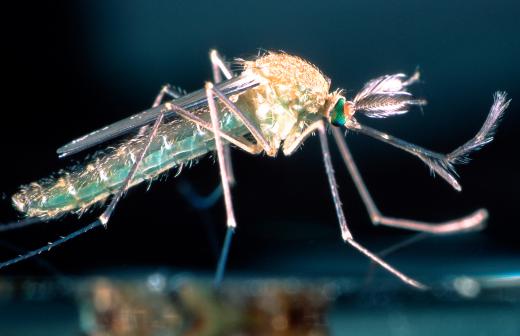

Plaque normal
Should residents of other regions be afraid of the "Voronezh" invasion of mosquitoes
Doctor of Medical Sciences, Professor, Corresponding Member of the Russian Academy of Sciences, epidemiologist Mikhail Mikhailov explained to Izvestia that ticks become active with the onset of warmth. And global warming leads to an increase in the activity and distribution of these arthropods. This phenomenon has been observed in recent years. And the problem will remain acute.
Ticks in the Moscow region 2020: dangerous areas
Only Taldomsky and Dmitrovsky areas are considered endemic for tick-borne encephalitis. At the same time, ticks are found and annually bite people in absolutely all areas of the region, but either they do not transmit any diseases at all, or they transmit any other tick-borne infections. Unfortunately, there are no exact statistics that fully reflect the picture. You can see where ticks live in the Moscow region in 2020, and see how far from you dangerous areas are located, you can on the map.


Arguments in favor of the theory of the occurrence of encephalitis in the Far East
Basically, these conclusions are based on the results obtained by the Zilber expedition.
- In the East, cases of infection with encephalitis took place already in 20-30 years, and a severe form of this disease in Western Europe was recorded in the Czech Republic only in 1948 (then the disease was called "Central European encephalitis", although all the signs of tick-borne encephalitis were present).
- All forest and forest-steppe zones, from Western Europe to the Far East, plus Mongolia, China and Japan, are natural natural zones of distribution of ixodid ticks. But the first cases of diseases, which later became numerous, appeared nevertheless in the Far East.
- The number of cases of diseases in the Far East is explained by the fact that in the 30s, the active development of this region was carried out on the economic side, plus, at the same time, military formations were stationed in the taiga. Household work and the presence of troops directly in the taiga led to an increase in cases of infection with encephalitis.
It is these ideas that are still considered the most reliable.
How to protect yourself from ticks
No single remedy or method of protection against ticks guarantees 100% safety, but combining several approaches at once can significantly reduce the likelihood of bites and transmission of infections as a result.
- Use protective tick repellents and acaricides on a regular basis.
- When going out into the woods for a walk or picking mushrooms, wear light-colored, closed clothing, on which ticks will be easy to spot.
- Do not lie on the grass without a blanket, do not place hammocks, garden chairs, swings and tents next to bushes and thickets.
- While in nature, periodically inspect yourself for insects crawling on you and brush them off.
- If you have pets, talk to your veterinarian about the best way to protect them from ticks, buy special drops, spray and / or collar that repels parasites.
- Tell your young children about ticks, explain why they are dangerous and how to be careful in nature to avoid being bitten.
- Regularly mow the grass in the country, the shorter it is, the less likely it is that ticks will lurk in it.
- Perform acaricidal treatments of the entire summer cottage yourself in the spring and autumn, or order the appropriate service from the SES.
Helpful advice
Prepare and carry with you a first aid kit in advance: a special tick wringer, which you can buy at the pharmacy or online, a disinfectant, and a small container for testing the tick. Write in the phone the addresses and contacts of all medical institutions near your place of rest, which you may need in case of a bite.
Encephalitis is the only tick-borne infection from which at the moment the vaccination can be done in advance. Rospotrebnadzor recommends the following vaccination schedule:
- The first vaccination is in October-November.
- The second vaccination is 5–7 months after the first.
- The third vaccination is 12 months after the second vaccination.
- Further - a booster shot every 3 years.
If you did not start the vaccination course in the fall, you can get the vaccination against encephalitis on an accelerated schedule. You can get the exact recommendations for vaccination against tick-borne encephalitis from your doctor. The vaccination can be done free of charge at the clinic or contact a commercial clinic where you can choose the vaccine yourself.
Activity
The main food for ticks is blood. Although they can survive without food for more than several years, their goal is still to pump from the belly. Therefore, you should not stroke the leaves of trees and bushes in a romantic impulse. Sit down on the grass. If there is such a need, it is better to pre-treat yourself with an anti-tick agent. Ticks have no organs of vision. But do not think that this somehow stops them. They are able to smell a person or an animal at a distance of 10 meters. While you are walking slowly, this parasite is already preparing to jump, stretching out its legs. The paws of the tick are generally universal. The organs of smell are located on them, in addition, they have special suction cups with the help of which the tick clings to any chosen victim. The head and neck are one of the most vulnerable places.
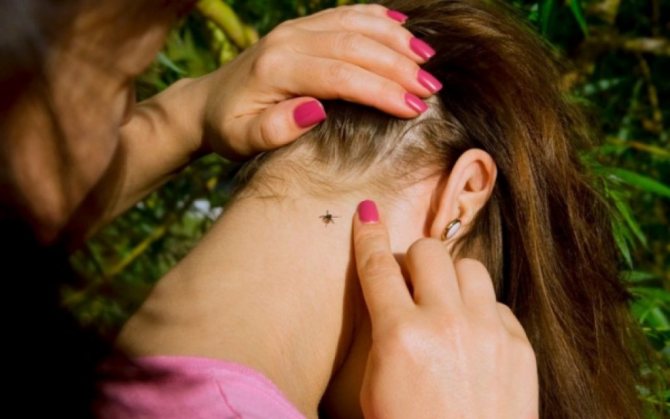

Therefore, attacks should be feared from this side. They can also jump out of the grass, which means that the lower limbs often become a refuge for ticks. Having caught on, the tick finds a place to settle and begins to suck blood. And after he finishes he swells and falls away. But this is not really scary.
Infected parasites have poison in their saliva, which enters the human body and carries the virus.That is why the tick cannot be crushed. So the poison will penetrate even faster into the blood.
Seasonal peak
The most active period for ticks is summer. But they begin to appear already in April and calmly attack until October. During these periods, you need to be extremely careful. But you shouldn't relax in winter either. Although the chance of picking up a tick in winter is very scanty, there were still such cases. Especially in areas where winters are mild and warm enough.
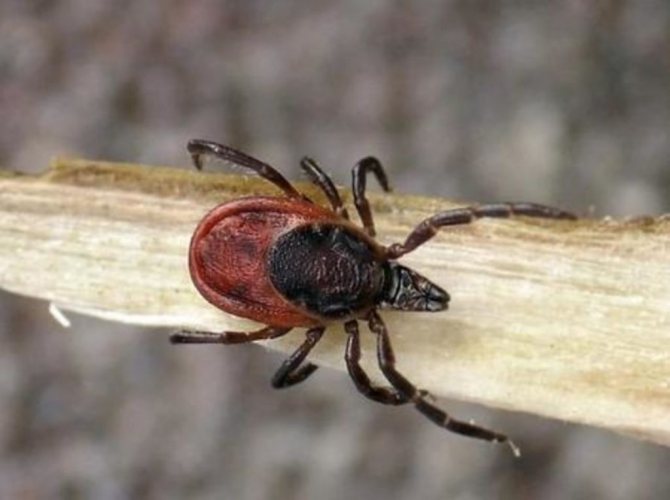

In colder periods, a person is more or less protected by clothing. But animals in this case are defenseless. Therefore, after each walk, inspect your pet be sure. If you bring a tick into the house, it can get to you. In warm conditions, he will come to life and start looking for food. Therefore, you are at risk. Be sure to inspect your clothes and everything that you bring into the house: berries, flowers or mushrooms.

